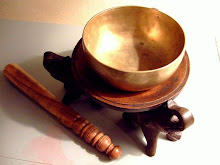
"The ego has blinders. The Divine does not.”
- Joe Vitale
The sign posts are clear, and there is only one way to enjoy the journey: to go and keep going. The safe alternative is to continue reading the guide books.
The sign posts are clear, and there is only one way to enjoy the journey: to go and keep going. The safe alternative is to continue reading the guide books.
A year has passed, and it is again an excellent time to review a year completed, and the road ahead.
Over the past weeks, I was inspired while listening to Joe Vitale’s 2010 audio program The Abundance Paradigm. His powerful theme is that of a white board, representing the Source, or our pure Self. So much is written on our personal white board to obscure its space. It needs to be wiped clean.
Like Steve Jobs with the iPod, it probably wasn’t Joe Vitale who first invented this theme of the white board. But he has made sure, in his trademark fashion, that people now have easy access to this wisdom.
This evening, when reviewing an essay I wrote in December 2003 during the Tapping the Creative Universe Workshop offered by Jim Paredes, I smiled when I read this passage:
“At any moment, I can wipe the whiteboard of my life clean, I return to stillness, purity, nothing or zero. The empty balance between positive and negative, from which new things can grow in me, and at which I can make clear decisions. It is the Zero Doctrine – total flexibility, the absence of fixed ideas. It’s when I can hear the plants grow.”
Where did I get this inspiration 8 years ago? My Google search for Zero Doctrine this evening didn’t yield anything significant. It must have come from the white board itself.
I recognize Joe Vitale for making his own growth toward greater consciousness and awakening so publicly (and commercially) available for others to emulate. His message is often right on target, like when he points out that the word action is embedded into the Law of Attraction.
We have to take action to make our journey. To wipe our personal white board clean. And to honor the inspirations we receive with action.
As a timely reminder for celebrating our passage into the new year, Vitale’s words remind us that ego-led intentions can produce results, but that inspiration can produce miracles. If we take action.
Happy New Year 2012!
Photograph: New year sparkles on iPad by Natalie.









